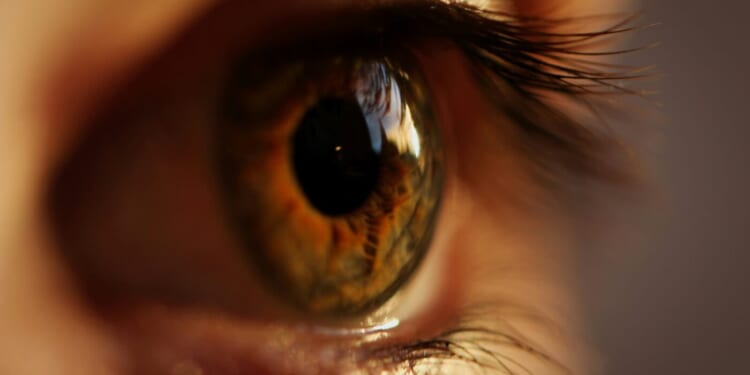This article explores the evolution of the concept of “lust” and its implications—a process resulting from two major paradigm shifts. Examining these sociohistorical changes allows us to gain an understanding of the persistence of lust in modern society and the moral challenges it poses.
While using my phone, an unwanted seductive advertisement appeared. This seemingly trivial event revealed that lust, once regarded as a sin of one person sexually desiring another, has become a core aspect of media, permeating everyday life and shaping attitudes and consumption patterns.
In Matthew 5:28, Jesus said, “But I say unto you, that whosoever looketh on a woman to lust after her hath committed adultery with her already in his heart.” The occurrence of lust, therefore, required a man looking at a real, human woman with a desire to commit adultery.
Throughout human history, lust has evolved from a sin to be avoided into a powerful strategy in the fields of entertainment, media, and advertising—used to attract purchases in everything from soap to automobiles. This evolution has influenced individual behaviors, societal norms and values, leading to a widespread relaxation of moral standards.
Looking deeply into Matthew 5:27–28, we can see that Jesus fulfills the true spirit of the Law: “Do not think that I have come to abolish the Law or the Prophets; I have not come to abolish them but to fulfill them.” Jesus cites the seventh commandment, saying, “You shall not commit adultery,” considering it a physical act. In the same passage, Jesus directs us to the source, indicating that adultery first encompasses the mental desire to commit the physical sin.
This concept of “adultery in one’s heart” is a key aspect of lust and underscores the importance of controlling one’s desires and maintaining internal purity. Jesus then shifts the focus from external compliance to addressing the core of sin, which is created within one’s heart. This is reaffirmed in Mark 7:21–23:
For from within, out of the heart of men, proceed evil thoughts, adulteries, fornications, murders, thefts, covetousness, wickedness, deceit, lasciviousness, an evil eye, blasphemy, pride, foolishness: All these evil things come from within, and defile the man.
Understanding lust from a historical perspective is crucial to comprehending its changing dimensions. During Christ’s lifetime, prevailing views on lust and physical sin were shaped by strict moral codes that associated lust with moral failure and spiritual corruption. Early Christians valued chastity and linked physical desire outside of marriage to sin; therefore, “lust” was feared as a deviation from spiritual purity (Kelly, 2019). As St. Augustine observed, lust corrupts the soul even when no outward action follows, that “the consent of the heart to lust is itself damnable” (Coulter, 2025).
Two paradigm shifts resulted in the evolution of how we view lust today.
The First Shift
The first shift occurred around 1840 with the introduction of photography (Gernsheim, 2025). For the first time, real human bodies—not stylized artistic renderings—were captured and reproduced, dramatically changing how lust was consumed. By the 1860s, photographic collections of nude females were being sold in Paris (Ogawa, 2007). By the late 1800s, other “visual” technologies, such as the stereoscope, enabled the private, intimate viewing of erotic scenes in 3D (The History of the Stereoscope, n.d.).
The invention of motion pictures in 1895 added an immersive quality to lustful experiences. Henceforth, lust was no longer static; it could now be dramatized and narrated, as shown in Edison’s provocative 1896 film “The Kiss” (Riganas, n.d.). These technologies marked a significant conceptual change in that lust became more immediate, private, and accessible (Grundberg, 2025).
In the early 20th century, advertisers recognized the power of lust and tapped it to achieve successful campaigns. For example, the ad campaign “A Skin You Love to Touch” employed erotic innuendo. These contributed to normalizing lust as a desirable and playful aspect of consumer life (Pope, 2003).
By the 1920s, businesses routinely employed erotic imagery. As Roland Marchand (1985) notes, advertising “did not just reflect cultural values—it helped to create them.” By this time, lust had already evolved from a vice into an aspirational tool of modern living.
Significant cultural changes accompanied this lust-driven commercialization. By the mid-20th century, as contraception became more accessible, sex outside marriage was normalized, losing its social stigma (Tone, 2001) and further eroding Christian values. Technological innovations and conceptual changes transformed lust from an internal temptation into an external, consumable product, profoundly influencing societal attitudes and laying the groundwork for its normalization and commercialization (Jones, 2014).
The Second Shift
The second shift is marked by the emergence of artificial intelligence (AI), which produces hyper-realistic erotic images and videos based on user input (Ramesh, 2022). Using AI, an individual may specify every feature—age, body type, race, and behavior—and instantly generate videos of women who never existed. Lust no longer requires a human as its focus. AI technology has intensified lust’s solipsistic nature, underscoring that lust has always been “a one-person game” (Montgomery, 2023).
Such drastic development raises ethical and theological questions. If, in the past, lust required looking upon a real woman (Mt. 5:28), what are the implications when the object is synthetic? Philosophers, and even the Bible, have argued that the moral core of lust lies not in its object but in the subjective act of reducing another individual to an object of desire (Kierkegaard, 1847). Therefore, the main implication is that whether the “other” is real or artificial is already irrelevant—the sin resides in the intent.
What are the implications for those seeking to live a moral life?
The original interpretation was that lust required two people: the person lusting and the human object of that desire. However, the truth is that lust has always been a one-person game. It need not involve the object desired, but exists only in the mind of the person who is lusting. It matters not whether the object of lust is human or a computer-generated image; sin is in the lusting, not in who or what the object of that lust is (Schmitt, 2024).
Throughout history, lust has undergone a transformation from Christ’s teachings to its current iteration, facilitated by the use of various digital simulations. Each technological advancement—cinema, photography, advertising, and digital media—has magnified its reach, commodified its appeal, and complicated its moral significance. However, the core reality remains unchanged: lust is a matter of the heart.
Whether directed towards a human, a cinematic projection, or an AI-generated video, lust dehumanizes individuals—or their images—to objects for consumption. The challenge for those striving to live morally is to reclaim the vision Jesus articulated: a purity of heart that sees others not as instruments of desire but as beloved creations of God, inherently valuable and worthy of respect.
Photo by Marc Schulte on Unsplash












